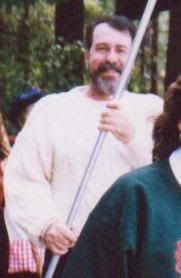The Colquhoun of Luss coat-of-arms is obviously connected with the Cross saltire of the Earls of Lennox. But the Chiefs’ heraldic supporters of two greyhounds, together with their crest of a red stag’s head and motto Si Je Puis (“if I can”), are linked with an old tale. The story runs that the king asked the Colquhoun chief to recover Dumbarton Castle from his enemies, that Scots and Gaelic-speaking Luss replied in the Norman-French fashionable at Court at that date, “si je puis”, and then pursued a stag with his hounds past the castle gates. The garrison opened them to join in the chase, whereupon his clansmen rushed the castle and captured it for the king. This clan legend may well be true. For in 1424, at the height of heraldry, King James I decided to overthrow the too powerful Lennox family, and chose John Colquhoun 10th of Luss to be his Governor of Dumbarton Castle and to wrest it from them. Interested heraldists will find the original armorial mourning “hatchments” of several chiefs in the “laird’s loft” or raised family pew in the kirk at Luss: one of the two best sets surviving in all Scotland.
When the Colquhouns went to war, their Chief dipped a charred wooden cross in goat’s blood, and sent this Fiery Cross by relays throughout the entire district of Luss: the bearer, usually mounted on a garron pony, shouting out the name of the gathering-place as he passed. The Colquhoun muster-place was usually at Cnoc Elachan, still the clan “slogan”, the “armoury hillock” near Rossdhu. Here the armed clansmen assembled, many coming by boat as the quickest transport in those roadless days, others by hill tracks, and were issued with arms if they had none and with badges of hazel, the lucky plant of their clan, to wear in their bonnets.
Subscribe to:
Post Comments (Atom)





No comments:
Post a Comment